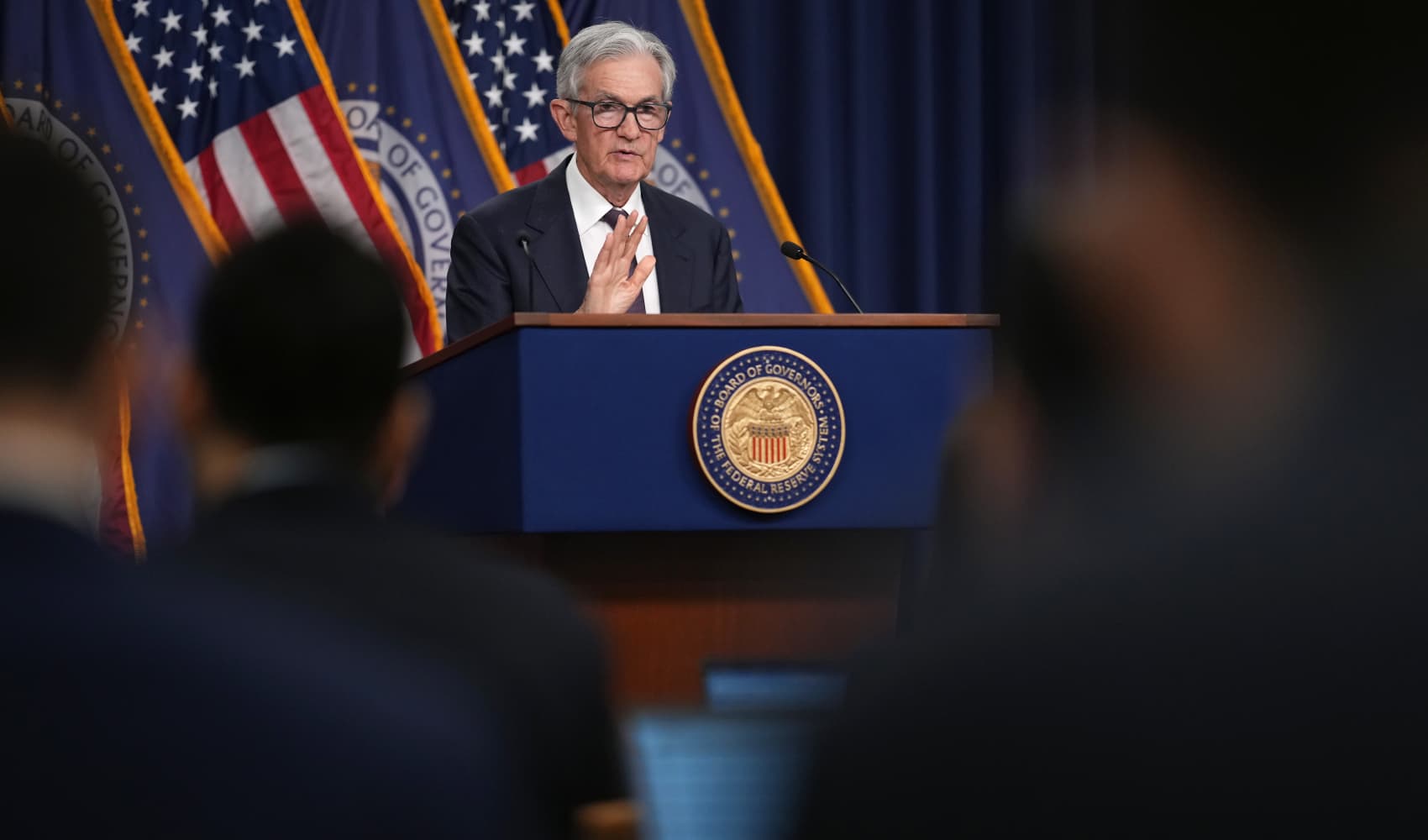Dow Climbs Amid Jitters: Is This A Bear Market Rally?
Dow Climbs Amid Economic Jitters: Is This a Bear Market Rally?
Introduction: Navigating a Sea of Uncertainty
The market landscape is anything but calm these days, isn't it? One day we're soaring to new heights, the next we're bracing for a potential economic storm. Yesterday was a perfect example of this market whiplash. The Dow Jones Industrial Average managed to eke out a gain, rising more than 100 points, while the S&P 500 wobbled, booking its third straight losing month. What's going on, and what does it mean for your investments?
Dow's Upward Trajectory: A Sigh of Relief or a False Dawn?
Let's break down the numbers. The Dow Jones Industrial Average added 141.74 points, or 0.35%, closing at 40,669.36. That's a positive headline, no doubt, but it's important to remember the context. This gain came after a rollercoaster session where the Dow had plummeted over 780 points at one point. Was this a legitimate rally, or just a temporary reprieve before the next dip?
S&P 500's Struggle: A Three-Month Downturn
While the Dow painted a somewhat rosy picture, the S&P 500 told a different story. Despite a narrow 0.15% gain to close at 5,569.06, the broad market index still registered its third consecutive month of losses. This indicates a broader weakness beneath the surface, suggesting that the Dow's performance might not be indicative of the overall market health. It’s like seeing one tree thriving in a forest that's slowly withering.
Nasdaq's Mixed Signals: Tech's Uncertain Future
The tech-heavy Nasdaq Composite slipped 0.09% to end at 17,446.34. This is a significant data point. The Nasdaq, often seen as a bellwether for future growth, is struggling to maintain momentum. This could signal a potential slowdown in the tech sector, which has been a major driver of market gains in recent years. Is the tech bubble about to burst, or is this just a temporary correction?
The Wild Ride: A Day of Extreme Volatility
As mentioned earlier, investors endured a truly "rocky" session. The S&P 500, at its lowest point, was down nearly 2.3%, while the Dow shed more than 780 points. This level of volatility highlights the nervousness permeating the market. It's like riding a bucking bronco – exhilarating for some, terrifying for others.
Economic Data: The GDP Surprise
First Quarter GDP Decline
The Commerce Department released data showing that first-quarter gross domestic product (GDP) declined at a 0.3% rate, a sharp reversal from the 2.4% increase in the fourth quarter. This unexpected contraction fueled recession fears and triggered the initial market sell-off.
Interpreting the Numbers: Beyond the Headline
However, some analysts argued that the GDP figures were skewed by a 41% surge in imports in the last quarter, as companies rushed to import goods ahead of potential tariffs. While this may partially explain the decline, it doesn't completely alleviate concerns about the underlying economic health. It's crucial to dig deeper than the headlines and understand the nuances of the economic data.
Recession Fears: Are We Headed for a Downturn?
The GDP data, coupled with ongoing inflation concerns and rising interest rates, has amplified fears of a potential recession. A recession is often defined as two consecutive quarters of negative GDP growth. If the current trend continues, we could be officially in recession territory soon. Imagine a car running out of gas – the economy might be sputtering and on the verge of stalling.
The Fed's Dilemma: Balancing Inflation and Growth
The Federal Reserve faces a difficult balancing act. On one hand, it needs to combat inflation by raising interest rates. On the other hand, raising rates too aggressively could stifle economic growth and trigger a recession. It's a tightrope walk with potentially severe consequences. The Fed's decisions in the coming months will be crucial in determining the trajectory of the economy.
Investor Sentiment: Cautious Optimism or Nervous Pessimism?
Investor sentiment remains fragile. While some investors are cautiously optimistic, hoping that the recent market volatility is just a temporary correction, others are increasingly pessimistic, bracing for a potential downturn. This uncertainty is reflected in the market's wild swings.
Sector Performance: Which Sectors Are Thriving (and Which Are Struggling)?
It's important to look beyond the headline indices and examine the performance of individual sectors. Some sectors, such as energy, may be benefiting from rising commodity prices, while others, such as consumer discretionary, may be struggling due to inflation and decreased consumer spending. Analyzing sector performance can provide valuable insights into the underlying dynamics of the market.
The Impact of Geopolitical Events: A World on Edge
Geopolitical events, such as the ongoing war in Ukraine and tensions with China, are also contributing to market uncertainty. These events can disrupt supply chains, increase energy prices, and create volatility in global markets. In today's interconnected world, geopolitical risks are a constant concern for investors.
Strategies for Navigating Market Volatility: Staying the Course
Diversification is Key
In times of market volatility, diversification is more important than ever. Spreading your investments across different asset classes, sectors, and geographic regions can help mitigate risk and protect your portfolio from significant losses. Don't put all your eggs in one basket!
Consider a Long-Term Perspective
It's crucial to maintain a long-term perspective and avoid making rash decisions based on short-term market fluctuations. Remember that market corrections are a normal part of the investment cycle. Trying to time the market is often a losing game.
Revisit your Risk Tolerance
Market swings may be a good time to revisit your risk tolerance. Understand how you react to market declines, and if necessary, adjust your portfolio allocations to fit your comfort level.
Expert Opinions: What Are the Analysts Saying?
Analysts are divided on the market outlook. Some believe that the recent volatility is a buying opportunity, arguing that the market is oversold and poised for a rebound. Others are more cautious, warning that the risks of a recession are increasing and that further market declines are possible. It's essential to consider a range of opinions and form your own informed view.
The Road Ahead: What to Expect in the Coming Months
The next few months are likely to be volatile, with economic data, Fed policy decisions, and geopolitical events driving market sentiment. Investors should remain vigilant, monitor their portfolios closely, and be prepared to adjust their strategies as needed. Buckle up, it's going to be a bumpy ride!
Conclusion: Key Takeaways
The market is currently navigating a complex environment characterized by economic uncertainty, rising inflation, and geopolitical risks. While the Dow managed to eke out a gain, the S&P 500's losing streak highlights the underlying weakness in the market. Investors should remain cautious, diversify their portfolios, and maintain a long-term perspective. Remember, patience and discipline are essential for navigating market volatility and achieving your financial goals.
Frequently Asked Questions
1. What is causing the current market volatility?
The current market volatility is primarily driven by concerns about inflation, rising interest rates, potential recession, and geopolitical events such as the war in Ukraine.
2. Should I sell all my stocks now?
Generally, it's not recommended to make drastic decisions based on short-term market fluctuations. Consider your long-term investment goals, risk tolerance, and consult with a financial advisor before making any major changes to your portfolio.
3. What is a bear market rally?
A bear market rally is a temporary increase in stock prices during a prolonged period of market decline. It can be deceptive and doesn't necessarily indicate the end of the bear market.
4. How can I protect my portfolio during a recession?
Diversification, investing in defensive sectors (e.g., utilities, consumer staples), and holding some cash are common strategies for protecting your portfolio during a recession.
5. What should I do if I'm worried about losing money in the stock market?
Review your investment strategy, consult with a financial advisor, and consider reducing your exposure to riskier assets. Remember, investing involves risk, and it's important to understand your risk tolerance.



